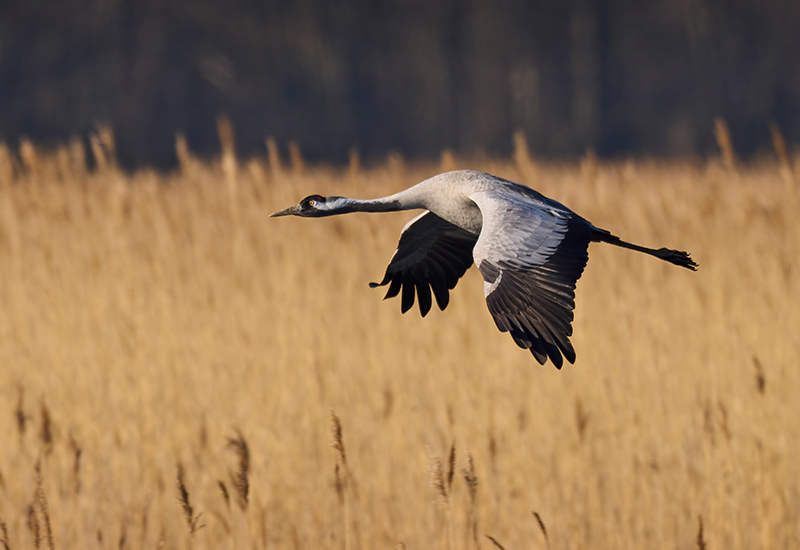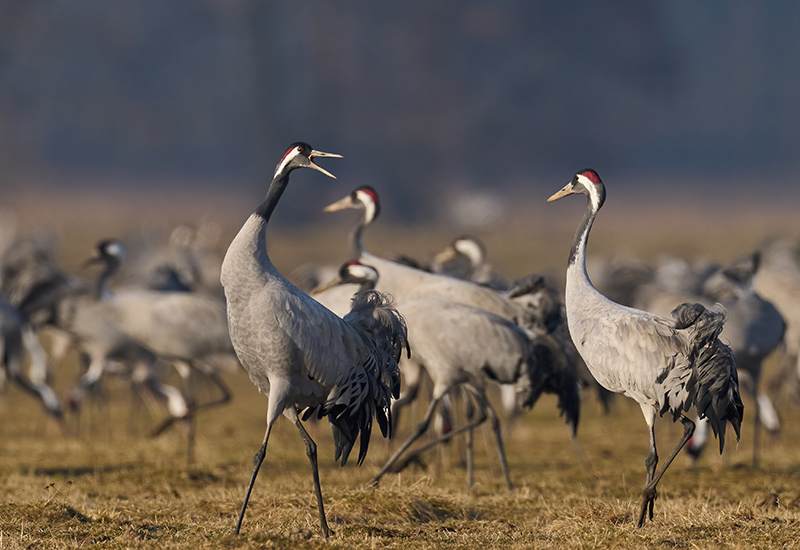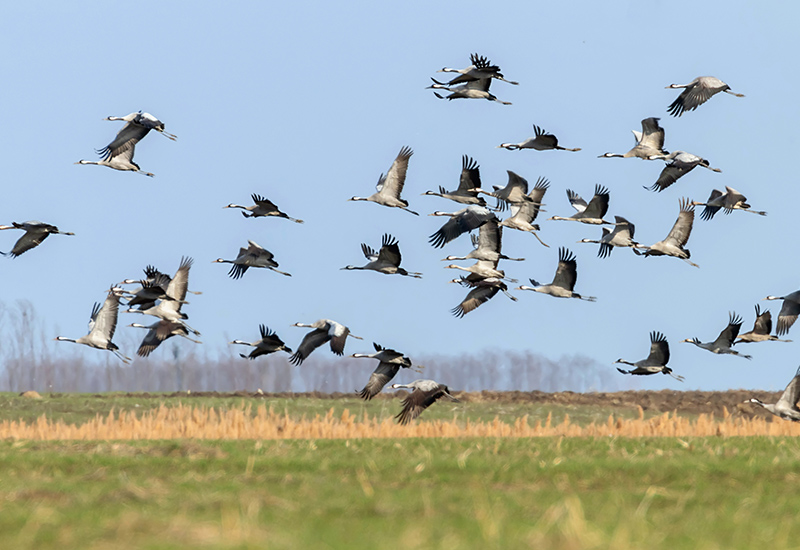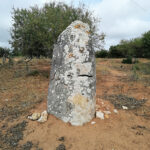Following the excitement of Christmas, most of us are feeling a bit sluggish with all the partying, eating and drinking; we may be regretting some of the festive season excesses.
For nature lovers and wildlife enthusiasts, why not start the year with a little adventure and a drive out to the neighbouring Alentejo region in search of a charismatic winter visitor, the common crane (Grus grus)?
This large bird, approximately the size of a stork, spends winter months in the Alentejo plains, sometimes in impressive numbers reaching the thousands. The crane is a graceful animal with a long neck and long legs, mostly grey in colour, with a black and white head and a distinctive red marking atop. The tail feathers are long and curved and stand out from the rest of the plumage.

Head out to Ourique and then towards Castro Verde and beyond into Alentejo country. The scenery here should be green at this time of the year, with the plains stretching for miles. Cereal fields with scattered oak trees contrast with oak forest areas, vineyards and large plantations of olive and almond trees. The usual arid and brown terrain is now covered only for a few months in a lush green grass carpet, wet with winter’s dew. Grasslands, wetlands and forest areas are ideal places to spot our wintering cranes, who spend most of the day on the ground feeding on grass shoots, acorns, olives, small insects, and even small mice and lizards. At the end of a crisp winter’s day, cranes fly together in magnificent V-shape formations to their chosen overnight spot.
In their northern Europe and Asia breeding grounds, this majestic bird displays its elegant mating rituals, including neck back-flicking in symphony with their pairs. As monogamous animals, cranes tend to pair for life.
Worldwide, there are 15 species of cranes distributed over five continents. Amongst these is the demoiselle crane (Grus virgo). Native to Central Asia, it’s the smallest of the cranes and is famous for battling the elements relentlessly as it flies over the Himalayas on its migration to India. The largest of the crane family is the sarus crane (Antigone antigone), which can stand up to 180 cm tall, making it the tallest flying bird.
In the upper-Alentejo region (Portalegre district), Campo Maior has been hosting a crane festival – Festival dos Grous – since 2019. Focused primarily on the observation of this species, the program offers a range of birdwatching walks and seminars over a weekend. The 6th edition of this festival will take place on the first weekend of February. Participants will need to enrol ahead of the event.

Facts
- Name: common crane (Grus grus)
- Height: 130 cm
- Length: 120 cm
- Wingspan: 240 cm
- Weight: 5–7 kg
- Longevity: 40 years













